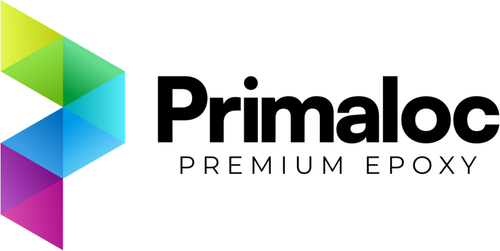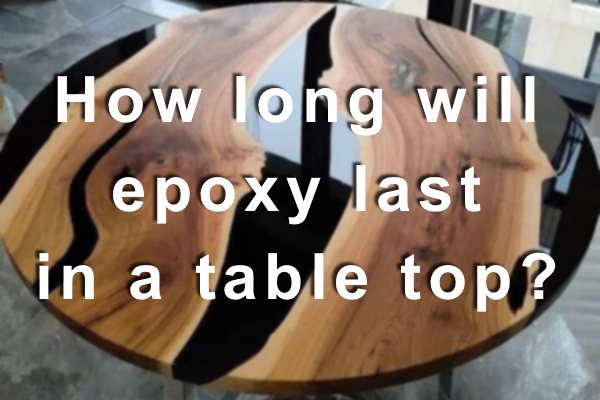Creating an epoxy table top or enhancing an existing one can be an enjoyable project that allows for plenty of creativity. For many DIY enthusiasts, a table top project is an ideal starting point for working with epoxy.
For tables that see regular use, though, it's normal to wonder just how long the epoxy can last. An understanding of its durability, along with how an epoxy's thickness, layering, and potential customization options can affect it, is useful to have before beginning your project.
In this guide, we’ll detail what you can expect from an epoxy table top. We'll cover its expected lifespan, ideal thickness, and layering options. Additionally, we'll explore customization possibilities and answer some common questions related to applying epoxy to large furniture items.
How Long Will Epoxy Last in a Table Top?
The lifespan of an epoxy table top can vary, typically lasting between 5 to 7 years, and potentially longer under ideal conditions. Several aspects influence this duration, including:
- The quality of the epoxy used.
- The maintenance routine, such as regular cleaning.
- The environmental conditions where the table is located.
Aspect #1: The Quality of the Epoxy Used
The longevity of an epoxy tabletop is significantly affected by the quality and type of epoxy used. With the current market flooded with various epoxy resins, discerning between high-quality products and those of inferior quality is crucial.
Steering Clear of Low-Quality Epoxy
At the lower end of the quality spectrum are numerous budget epoxy brands that might not withstand the test of time. These products are typically priced attractively because they are produced more cheaply, often at the expense of durability and safety.
You can explore more about the pitfalls of budget-brand epoxy here.
However, the most effective way to ensure a durable finish is to opt for a premium epoxy from a trusted brand.

Primaloc Epoxy: High-Grade Epoxy for a Timeless Finish
Choosing a high tier epoxy product is essential for achieving a lasting epoxy table top. At Primaloc, we offer top-tier epoxy resins, each formulated to ensure a minimum lifespan of 7 years under proper maintenance.
We offer two distinct epoxy solutions tailored for tabletops and similar projects:
- Primaloc Bar & Table Top Epoxy: This is our most robust epoxy, known for its crystal-clear finish and solid durability. It's waterproof and perfect for most tabletop applications.
- Primaloc Deep Pour Epoxy: Specially formulated for deep pour applications, this resin is ideal for projects like river tables where thick layers are required. Its low viscosity allows for smooth pouring and minimal bubble issues.
For standard tabletops, our Bar & Table Top Epoxy usually suffices, but for specialized projects requiring deeper pours, such as river tables, incorporating our Deep Pour Epoxy may be necessary.
Curious about epoxy river tables? Learn more here!

Aspect #2: Care and Maintenance of Your Epoxy Table Top
The longevity of your epoxy table top also hinges on how well it is maintained. High-quality epoxy finishes require minimal upkeep beyond regular cleaning to remain in excellent condition.
Routine Cleaning of Epoxy Finishes
Maintaining the clarity and luster of your epoxy finish is straightforward. Simply use warm water and mild soap for routine cleanings. The inherently smooth surface of epoxy is resistant to staining and scratching, which helps prevent residues and liquids from embedding within the finish, ensuring it remains pristine.
For detailed guidance on cleaning epoxy surfaces, click here.

Aspect #3: The Environmental Conditions Where the Table Is Located
The environment where your epoxy table top is placed can play a significant role in the longevity of the epoxy finish. Outdoor projects face more challenging climate conditions compared to indoor tables. Most users will position their epoxy table tops inside temperature-controlled buildings, but for those who place them outdoors or in varying environments, it's worth considering the following factors:
- Ambient Temperatures
- Exposure to UV Radiation
- Harsh Weather Conditions
Ambient Temperatures
Temperature typically isn't a major issue as long as the epoxy isn't subjected to extreme heat or cold. Epoxy remains stable once cured, with temperature sensitivity mainly during the mixing and curing phases.
Exposure to UV Radiation
Direct sunlight can affect cured epoxy over time. Prolonged exposure to UV rays may cause the epoxy to yellow, shifting from fully transparent to slightly tinted. To reduce this risk, place the epoxy tabletop in shaded areas or use coverings that block direct sunlight.
Harsh Weather Conditions
High-quality epoxy can withstand most types of adverse weather. Precipitation such as rain, snow, sleet, and hail generally does not harm the epoxy. Debris and residue from wind can be easily cleaned off without damaging the epoxy surface.
For more information on factors that can negatively impact epoxy, click here.
General Epoxy Q&A
When Should You Avoid Using Epoxy?
Epoxy performs well in many applications, but certain conditions are not ideal for its use. Avoid applying epoxy in extremely hot or cold environments unless you can maintain a controlled area with appropriate temperature and humidity for mixing and curing.
Additionally, do not allow epoxy to cure in direct sunlight, as the heat from the sun can disrupt the curing process.
Learn more about unsuitable conditions for epoxy use here.
What Can Damage Epoxy?
While epoxy is resistant to many types of damage, certain factors can still affect its integrity:
Improper Preparation, Measuring, or Mixing
Each step in the epoxy application process is important. Inadequate preparation of the substrate, incorrect measurements of resin and hardener, and insufficient mixing can lead to issues with the epoxy finish.
Harsh Solvents
Strong solvents such as bleach and acetone can harm epoxy by breaking it down or causing other forms of damage. Acetone is effective for removing unwanted epoxy. If these chemicals come into contact with the epoxy surface, they can often be wiped away promptly. Always wear gloves when handling strong cleaning agents to protect your skin.
Sharp Objects
Even though epoxy is durable, sharp objects can scratch or mar the surface. For example, using a sharp knife on an epoxy-coated table can leave marks. It is recommended to use cutting boards to protect the epoxy surface, even though cured epoxy is safe for food contact.
Should You Seal Wood Before Applying Epoxy?
Yes, sealing wood before applying epoxy is recommended. Applying a seal coat of epoxy to wooden surfaces helps to remove air and seal the pores in the substrate. This provides a better surface for the subsequent flood coat to adhere to, enhancing the overall durability and appearance of the epoxy finish.
Primaloc Epoxy: Premium Epoxy for Premium Results
With our premium Bar & Table Top Epoxy and our Deep Pour Epoxy, Primaloc gets the job done. Our epoxy resins are premium-grade, with high performance in every category, including:
- Unmatched Strength: A Primaloc finish won't buckle, even under high pressure.
- Long-Lasting Resilience: Primaloc epoxy lasts for many years with minimal care, and can endure high-traffic environments with ease.
- A Crystal-Clear Coating: With its pristine, transparent appearance, looking at a cured Primaloc coating is like peering through a window.
Epoxy resin can be beautiful, strong, and long-lasting—which is why you shouldn't compromise on quality. With Primaloc Epoxy Resin, you get the ultimate finish in durability and visual appeal.
Protect your surfaces by giving them a rock-solid epoxy finish. Choose strong. Choose reliable. Choose Primaloc.




